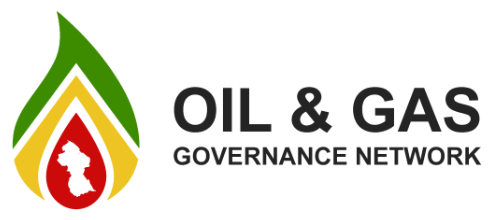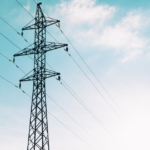It has been said, “Every action has an equal and opposite reaction.” The equal reaction of oil and gas drilling are the revenues generated back into Guyana’s economy. But more consequential are the opposite reactions of oil and gas drilling, if not managed properly – there can be loss of marine life, disruption to coastal reefs, increased pollution, and negative impacts on climate change and to the people of Guyana.
Can you imagine a day that the Mon Repos or Parika markets no longer have catfish, curass, or snapper? That could be the impact of oil and gas drilling – a disruption to the natural ecosystem and biodiversity, if oil companies are not held accountable for the highest environmental standards. As of today, there is no real strict monitoring and enforcement of the environmental laws of Guyana as it pertains to oil and gas drilling, and at the moment, the oil companies are lax in their treatment of Guyana’s environment.
Throughout the journey of oil from the depths of the ocean to oil refineries, there are several places where long term, lasting impacts can affect the citizens of Guyana.
Let’s start with oil drilling. The act of drilling for oil, setting up oil rigs, using Floating Production Storage and Offloading Vessels, commonly called FPSOs, and discharge of hot water into the ocean, forces marine life in the radius of the heavy machinery to migrate to other areas in the ocean. This may be detrimental to their well-being and thus disrupt the oceanic food chain. Take, for example, shrimp – a delicacy in Guyanese households – that may now have to migrate from the warmer South Atlantic waters to colder ocean water – to which they are not well suited and may likely cause a reduction in their population.13
According to the Ministry of Agriculture, “The fishing industry is one of the most important contributing sectors to Guyana’s revenue as the country exports more than 60 percent of its catch. This industry is responsible for the livelihood of approximately 15,000 persons and their families.”
Of more impact to natural habitat are oil spills. A single oil spill can cost billions of dollars for cleanup, cause substantial impact to marine life, and has lasting long-term impact to anything and everything in the vicinity of the spill. Take for example, the BP Deepwater Horizon oil spill in the Gulf of Mexico in 2010 which has cost BP about US$62 billion. (That amount represents the budget of Guyana for 20 years at the current rate). “The resulting spill covered 68,000 square miles of sea surface – that is an area which is larger than countries such as Cambodia, Uruguay, or Suriname – and almost 80% the size of Guyana.19 This oil spill also killed approximately 1 million coastal and offshore seabirds; 5,000 marine mammals; and 1,000 sea turtles.”1 The BP Deepwater Horizon oil spill was a combination of a series of human errors, government’s lack of regulatory procedures and processes for monitoring, inspection, and evaluation, poor environmental governance, and poor operational practices by BP; this is the same combination of things we see brewing in Guyana at the moment, if strict action is not taken now.
The negative impacts of setting up oil drilling operations, and the result of oil spills, have been highlighted but there is yet another detrimental activity in oil drilling called “flaring.”
Flaring is when natural gas is burned off in the process of extracting oil – the act of burning natural gas releases carbon and methane into the environment. Since starting oil production in December 2019, ExxonMobil’s subsidiary Esso Exploration and Production Guyana Ltd, has flared more than 12 billion cubic feet of ‘associated gas’ from Guyana’s Liza 1 offshore oil field. As of March, 2021, Esso continues to flare Guyana’s gas in violation of the Liza 1 Environmental Permit. It is now flaring up to 18 million cubic feet per day. To put this into perspective, this is more than a day’s consumption of natural gas in the nation of Germany – a country with a population that is 107 times more than the population of Guyana. And here is another eye-opening fact: “The carbon dioxide emissions from that flaring are approximately equivalent to the amount generated by Guyana’s entire population over three months.”19
Why does this matter to you? OGGN wants citizens to be environmentally conscious. Given that 90% of Guyana’s population reside on the coast5, imagine even more flooding and an ever-damaging sea defense due to rising tides as a result of destroyed reefs and increased global warming. The amount of energy from the gas destroyed, to date, is roughly equivalent to the amount of electricity the whole country of Guyana consumes in a year. Incomplete flaring (improper burning) of natural gas produces methane which is 84 times more potent than carbon dioxide in causing climate change. That can mean hotter weather in Guyana and more overtopping of the seawall that protects Guyana’s low lying capital city, other coastal villages, and agricultural areas.
Another side effect of flaring is air pollution, which damages the lungs and can increase the danger to health and life during the covid-19 pandemic.
Over the long term, continued gas flaring will likely have a severe economic impact on Guyana and neighbouring countries. As an example, annual economic losses related to gas flaring are estimated to be more than US$5B in Russia and US$11B in Nigeria.14
As a country, Guyanese must demand from our leaders and oil companies that emphasis be placed on minimizing the environmental impacts of oil drilling and refining; otherwise, we risk becoming a wealthy, but severely unhealthy population that lacks the vibrancy and energy seen today in Guyana.
It must be mentioned that oil companies can drill for oil in a responsible manner, as is done in Denmark. Some companies have good reputations for implementing responsible, best practices when producing oil. For instance, Clearstone Engineering Ltd. in Canada has been piloting projects in Colombia to mitigate flaring by identifying high-impact and cost-effective opportunities to reduce emissions such as trying to capture condensable liquids from flared gas. This is a way for companies to recover costs and increase profits. Ideally, this is something that could mitigate negative impacts while improving quality of life.
So what is to be done? The Government of Guyana must:
- Address gaps and create stricter legal/regulatory frameworks to ensure set standards for compliance, rigorous monitoring and evaluation, and enforcement of all environmental standards
- Perform independent audits of the operations of the oil companies to understand their environmental impact, and publish environmental data from the oil and gas industry for ongoing public analysis
- Require oil companies to do environmental impact assessments and meet corporate social responsibility mandates in terms of what this means for companies and what this means for the environment and health and safety of communities
- Focus on Social and Economic Impact Assessment (SEIA) for sustainable development, as required for all extractive projects
- Create a systematic, ongoing plan for monitoring and evaluating impacts by Guyana’s EPA. The Guyana’s government must implement rules for carbon emissions and may consider requiring an environmental bond to be paid by oil companies.
And finally, the oil companies must ask themselves this question “Are megaprofits more valuable than the lives of Guyanese citizens?”
Solutions to gas flaring:
- https://www.energyforgrowth.org/memo/gas-flaring-why-does-it-happen-and-what-can-stop-it/
- https://www.generon.com/what-is-gas-flaring-why-is-it-done-alternatives/
Sources:
- https://www.wilderness.org/articles/blog/7-ways-oil-and-gas-drilling-bad-environment
- https://www.frontiersin.org/articles/10.3389/fenvs.2016.00058/full
- https://sciencing.com/list-7459738-environmental-impacts-oil-extraction.html
- http://www.fao.org/fishery/facp/GUY/en#:~:text=Fish%20is%20the%20major%20source,fishing%20and%20120%20in%20aquaculture.
- https://www.dhigroup.com/-/media/shared%20content/global/references/nala/case%20stories/envandeco_casestory_gy_protecting%20the%20coast%20of%20guyana%20from%20coastal%20flooding.pdf
- http://www.oggn.website/category/contributors/melinda_janki/
- https://www.kaieteurnewsonline.com/2020/07/24/guyana-broke-its-own-laws-to-facilitate-exxonmobils-flaring-intl-lawyer/
- http://www.oggn.website/category/contributors/gary-girdhari/
- https://www.nytimes.com/2020/07/14/climate/methane-emissions-record.html
- https://www.sciencedirect.com/science/article/pii/S0141113613001621
- https://www.stabroeknews.com/2021/01/24/news/guyana/fishermen-sing-praises-of-expanding-mangrove-forest-at-ogle/
- https://www.seafoodsource.com/features/dark-clouds-on-horizon-for-guyana-s-flourishing-seafood-sector#:~:text=Guyana’s%20Bureau%20of%20Statistics%20figures,million%20(EUR%207.7%20million).
- https://sciencing.com/salinity-calculated-5408231.html
- https://www.nature.com/articles/sdata2016104
- Flaring of Natural Gas in Guyana: Why Is It Happening, and How Can It Be Minimized?
- Liza Two will release 3 times more toxic water than Liza-One – EIAs
- Understanding the Basics of Gas Flaring
- https://www.ciel.org/news/exxons-gas-flaring-is-latest-sign-that-oil-may-turn-guyana-from-carbon-sink-to-carbon-bomb/#:~:text=The%20carbon%20dioxide%20emissions%20from,has%20discovered%20off%20Guyana’s%20coast.
- https://www.worldometers.info/geography/largest-countries-in-the-world/
- https://www.stabroeknews.com/2021/02/15/news/guyana/adams-insists-exxon-flaring-illegal-in-breach-of-permit/
- https://www.stabroeknews.com/2021/02/11/news/guyana/no-provision-in-liza-1-environmental-permit-for-massive-flaring/






